
“Can we take a moment to listen to what your body is saying right now? What’s happening when we’re talking about that situation? Whatever is happening, what sensations and feelings do you have?’
“I’m holding my breath and I don’t know why, I feel tension in the solar plexus and feel as if my shoulders were pulled up.”
“What feels the strongest now? Which sensation is calling for your attention the most?’
“In my shoulders, I feel a kind of tingling there as well. And it´s going all the way to my back.”
“Could we give this sensation some space for a moment? Can you fully feel into it?’
“Yes. Now the tingling seems to spread into my arms and hands.’
“Does it bring any emotion?”
“I´m feeling afraid. Fear, as if my hands were suddenly starting to shake, as if chills were running through them, it´s making me tremble slightly…”

In my last article about repressed emotions, trauma and the inner child, I promised you a continuation about the trauma treatment itself.
I was also talking there about the fact that trauma is not caused by external events, but by what happens inside us as a reaction to them.
Therefore, the occurrence of trauma is not at all conditioned by the fact that you were beaten, abused, etc. Not at all.
Trauma consists of an internal disconnection from one’s true self.
What happened is already done and you can’t take it back, but you can deal with the traces left after the trauma in your unconscious mind, in your body, in your emotional reactions.

Where is the trauma stored and how it manifests
When you experience something traumatic or your emotional needs are not met in childhood and you have to suppress certain emotions, etc., it is being written into your nervous system, connective tissues and muscles.
As we said in the last article, the manifestations of trauma are very different. Trauma manifests itself, among other things, in the fact that you do not feel well, sleep poorly, sweat, explode, etc.
And you may wonder what is happening, why you react with such intensity. You may not connect the feelings you are experiencing with an injury from the past.

Trauma often manifests itself in our closest relationships. Suddenly, we react in a way that we would not expect from ourselves.
But it can also come as constant vigilance, a tendency to have everything under control, insomnia, nightmares.
In response to trauma, various current experiences can trigger strong reactions and even body pain that we experienced during the original trauma.
Trauma essentially turns us into someone who automatically uses coping strategies and defences that have helped him manage challenging emotions in the past.
Then it often pulls us into fight and flight reactions.
What pushes you towards these reactions is based on past experiences stored in the emotional brain.
The imprint of trauma remains in form of emotions and bodily sensations, which in reality manifest as reactions and feelings, even if you do not consciously remember the trauma.
Trauma also – and this is probably the most important part – seems to take the reins of our life. As if under the influence of trauma, we are no longer the architects of our existence.
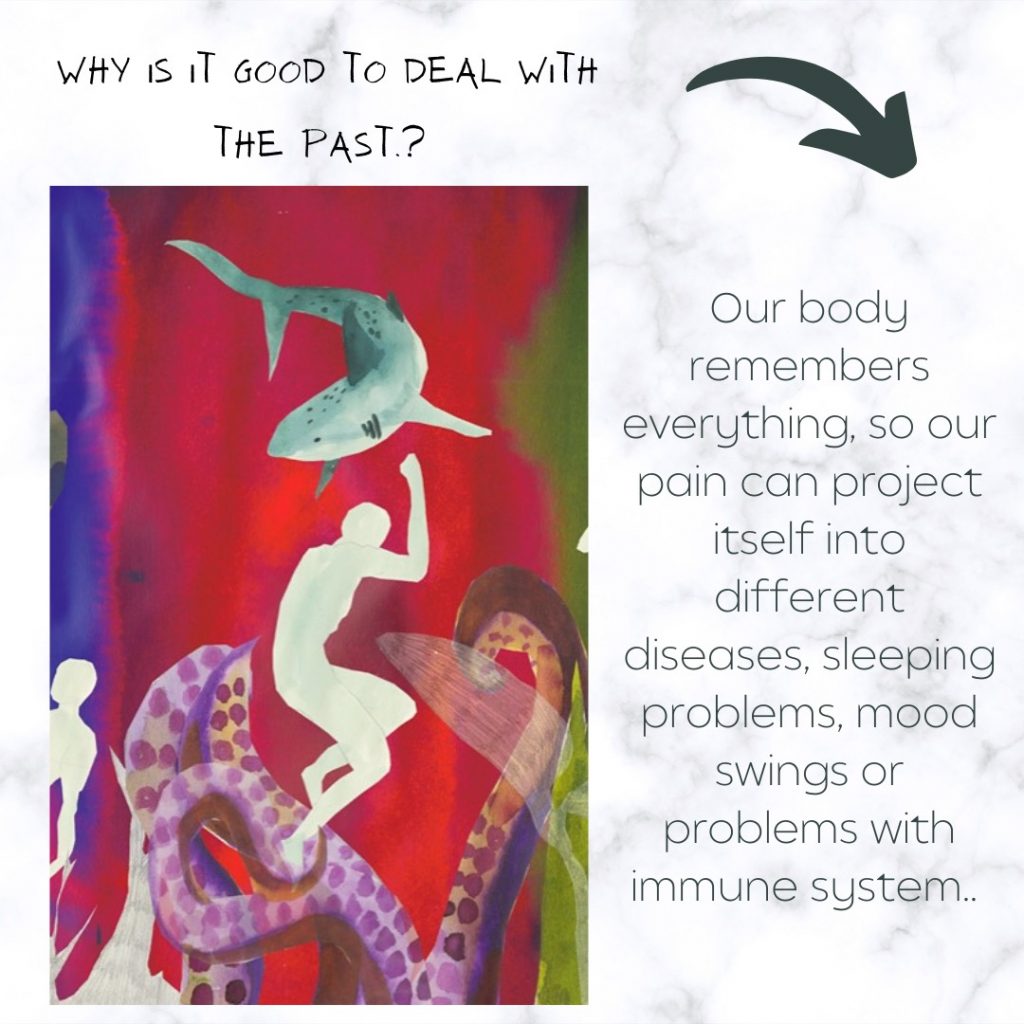
Working with trauma is therefore generally about rediscovering yourself and reconnecting with yourself. In short, to learn better self-awareness.
This can be clearly seen in the continuation of the example from the session with the client:
… “If this emotion or feeling could speak or otherwise communicate with you, how would it express itself now?”
“It isn´t saying anything right now, but the feeling is familiar. I´m just not sure when and where I´
ve felt it before.”“Does an image or a situation appear in your mind?”
“It doesn’t make much sense, but as a child I had to run from geese who were chasing me. It is a similar feeling of expecting something terrible and dangerous. Like I can’t go anywhere, I have to stay there and I’m shaking.”
“What’s happening now?”
“My arms still tingle a lot and I’m shaking a little. As a child, I had these tremors quite often, and my parents always took me to the hospital, where the doctors gave me infusions to calm my body down.”
“How old were you then?”
“About 7 or 8.”
“I have a feeling that it’s all about fear…”
Traumas are sometimes associated with unexpected.
Trauma, obesity and eating disorders
You may be wondering how trauma can be related to food, obesity or eating disorders. There have already been quite a few studies on this topic, so I will simply mention the connections here.
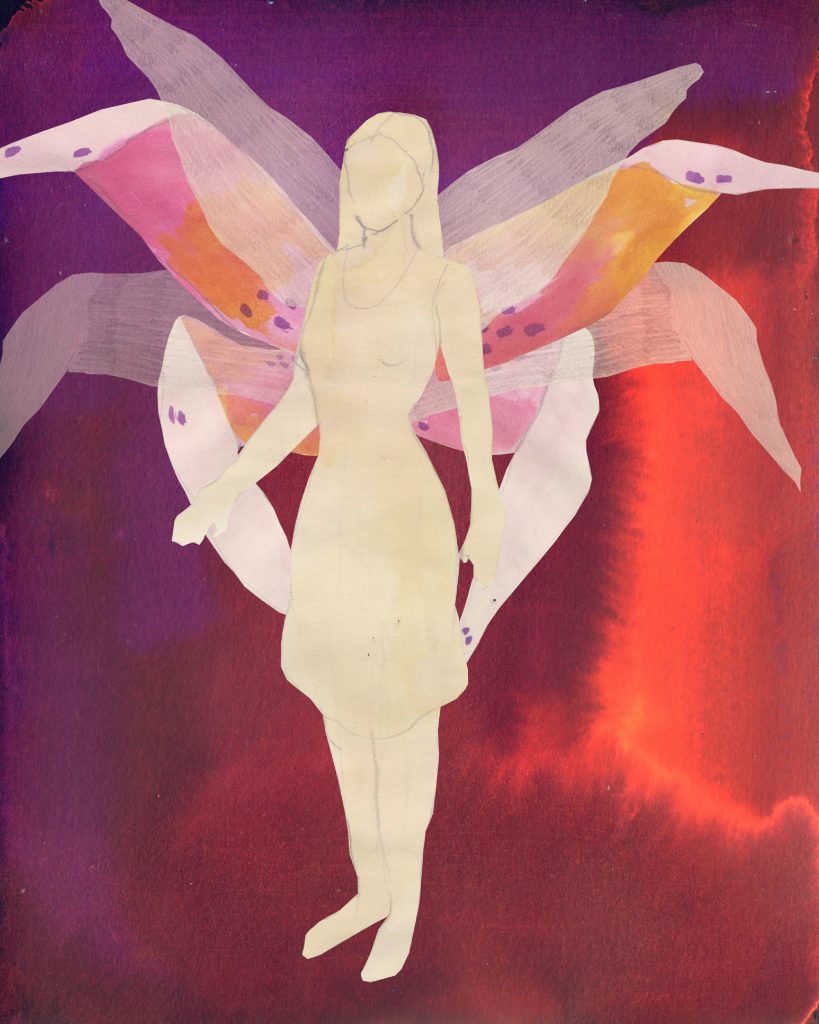
As children, we are born with an undeveloped nervous system, and we have basically no possibility of self-regulation.
The closeness of the mother, her body and breastfeeding help the child to calm down and regulate her emotions. Therefore, the comfort comes through food. When the baby is nervous, she gets the breast. During the first months, baby´s emotions are mostly regulated through this ritual with food.
When the nervous system is more developed and the baby is more interactive, the mother regulates her emotions through so-called social engagement system, which means using smiles, voice, different facial expressions, gestures and interactive play.

But if this social connection and regulation through contact does not occur, the child learns to self-soothe with food.
And it is during this period that a lifelong tendency to overeat or comfort ourselves with food so often develops. Felitti and his colleagues have shown in their studies that obesity is directly related to adverse childhood experiences (ACE – adverse childhood experiences – relation to negative experiences in childhood). Eating disorders are also related to them. All of this is based on trauma.
Adverse childhood experiences include physical, sexual, or emotional abuse, neglect, divorce, family violence, parental mental illness and addiction, and the death or incarceration of a parent.
Each of these experiences increases the risk of obesity, addiction, autoimmune disease, mental illness, but also risk of dysfunctional behavior.
These risks do not add up, but multiply.
And the result is disconnection from oneself, from one’s body and from the present, as well as a negative view of the world.
At the same time, this leads to a feeling of shame and guilt, which is created inside children as they take everything personally.

Therefore, when bad things happen to us as children, it makes us believe that we are bad.
We unconsciously carry this deep shame with us throughout our lives.
It also create space for all sorts of coping mechanisms like the inability to say “no”, excessive friendliness and kindness towards everyone, or an enormous need to work.
In brief, it is again this need to gain favor of other people. We also have different mechanisms of suppressing emotions that can lead to multiple diseases.

Even though trauma is at the root of many problems, as a society we still tend to ignore these studies. If you want to find out how you are dealing with negative experiences that can be the cause of trauma, you can download the ACE questionnaire on the Internet available for free (here).
Today, children show their dysregulated states by attracting attention with their behavior. It demonstrates that their nervous systems are out of balance.
Children cannot yet regulate themselves, calm themselves down.
To learn to manage their emotions, they need adults who can regulate their emotional states.
Post Traumatic Stress Disorder (PTSD)
PTSD is one form of complex post-traumatic stress. It is a specific cluster of symptoms that are particularly difficult to deal with. A person suffering from PTSD is constantly and repeatedly provoked by almost anything.
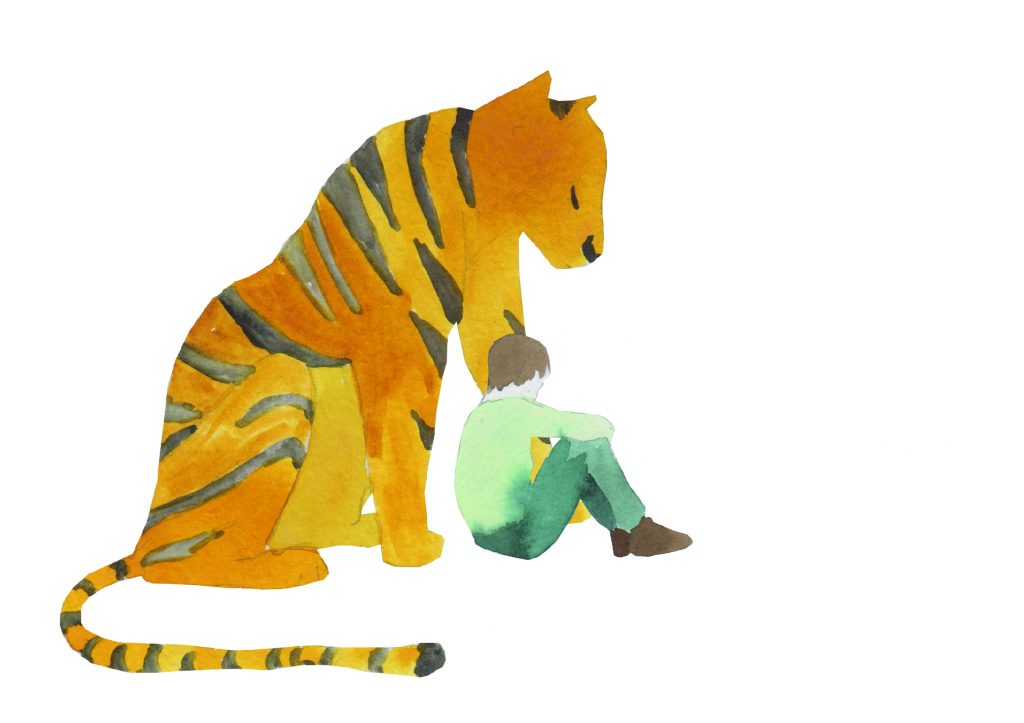
I personally use Compassionate Inquiry (in combination with other approaches such as KIP, imagination work, body work, art therapy, etc.) in work with chronic stress, emotional injury, and PTSD. There are many approaches to treat PTSD, and the main element of therapy is a feeling of safety.
When thinking about PTSD, keep in mind three important facts that I noticed in my study with Gabor Maté.
- PTSD is a normal response to abnormal realities.
- People who develop PTSD as adults were traumatized in childhood. It means that they are basically retraumatized. And until these people go back to the very core of the problem, childhood, instead of only talking about what happened to them as an adult, PTSD is difficult to treat. PTSD is always related to childhood.
- The treatment of PTSD must consist of a multifaceted approach: Bessel van der Kolk in Boston, for example, has a lot of success with rehearsing Shakespearean dramas with war veterans, as well as dancing, singing, drumming and the use of MDMA in a psychotherapeutic setting.

What is the goal of trauma work?
In order to reconnect with ourselves and become architects of our own lives, we need to go back to what happened to us. But not by just talking about it or reliving the pain. Definitely not.
The core is in fully connecting with yourself again.
To find the part of you that you were born with, but that has been covered by learned patterns, coping strategies, and defenses.
In most cases, it is good to have a guide, a therapist to heal internal wounds. In addition to professional aspects, make sure it is someone you can trust and feel safe with.
Safety is the basis for any treatment.
Safety does not only mean that we feel no threat, but mainly that it is possible for us to connect with the therapist.

And why is it not enough to just talk about the past?
Verbal therapy does not work in healing emotional wounds. Why? Because in life, we do not only follow the rational brain, but also the emotional one, where everything remains stored (within the so-called implicit memory).
A rational brain will not help you deal with emotions, perceptions and thoughts.
Understanding why we feel and react the way we do, will not change how we feel.
Because the body and emotions take a different time to heal wounds than the mind. The mind often understands very quickly what happened, why we relate to ourselves and others in a certain way.
On the other hand, our body still reacts in the same way, and the emotional reaction often comes back in a spiral.
Clients sometimes complain to me: “We have already treated this locked-up pain and emotion, a part of ourselves, devoted ourselves to it, so why is it coming back?”
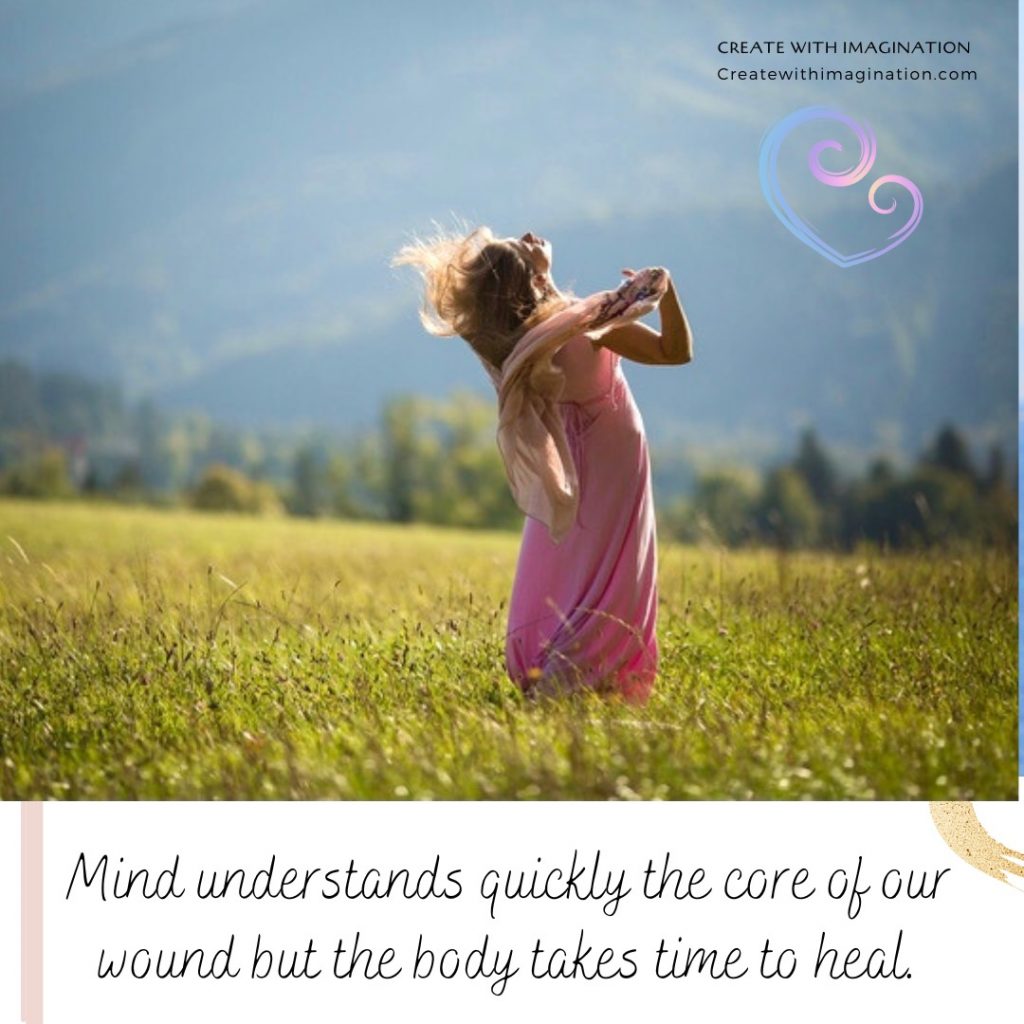
Yes, it is sometimes necessary to return to the same trauma repeatedly. But every time the challenge of an old wound comes to you again, you relate to it a little differently and peel back another layer. In short, the body doses the treatment and works differently than the mind.
The challenge is to find a balance between the emotional and the rational brain.
How trauma gets rewritten
It is necessary to establish a balance between these two brains and also to correct the so-called alarm systems, which are always disrupted by trauma. Trauma puts you into states of hyperexcitation or, on the contrary, makes you shrink and numb.
But the most important in any healing is self-awareness.
This means that you have an active prefrontal part of the cerebral cortex, where the center of interoception resides, thanks to which you perceive what is happening inside you, what you feel.
We’ll talk about what specifically helps bringing these two brains into balance and how to reconnect with yourself.
It is important to mention that it is useful to approach trauma healing using different methods. Also, don’t forget that being comfortable with the therapist and feeling safe with them is crucial to success.

What exactly does therapeutic work with trauma look like?
In compassionate inquiry, the approach of Gabor Maté with whom I trained, we use various questions that bring the clients closer to themselves. In this way, we help the client connect to the present and begin to perceive their body and emotions again, to be more in the present.
You can also see a small illustration in the part of the sessions that I share with you here.
But maybe you are interested more deeply how I personally work with this topic or in general in my practice. I will briefly outline some of the points that I usually address with the client.

In the sessions, together with the client, we explore the origin of feelings, defenses and behavior. Where is their reaction coming from at the moment. Where these patterns began.
It is shown in following example of one session:
… “I remember wanting the shaking to stop.”
“How’s the little girl feeling?”
“She’s desperate and scared. I didn’t understand why this was happening to me and I believed that there was something completely wrong with me.”
“What does the little girl need?”
“She needs someone to hold her and tell her that it’s okay, that her body is just reacting to something, and that we’re going to stay together and everything will be okay.”
“What happens if you imagine yourself going to her right now, saying these words to her, and doing what she needs?”
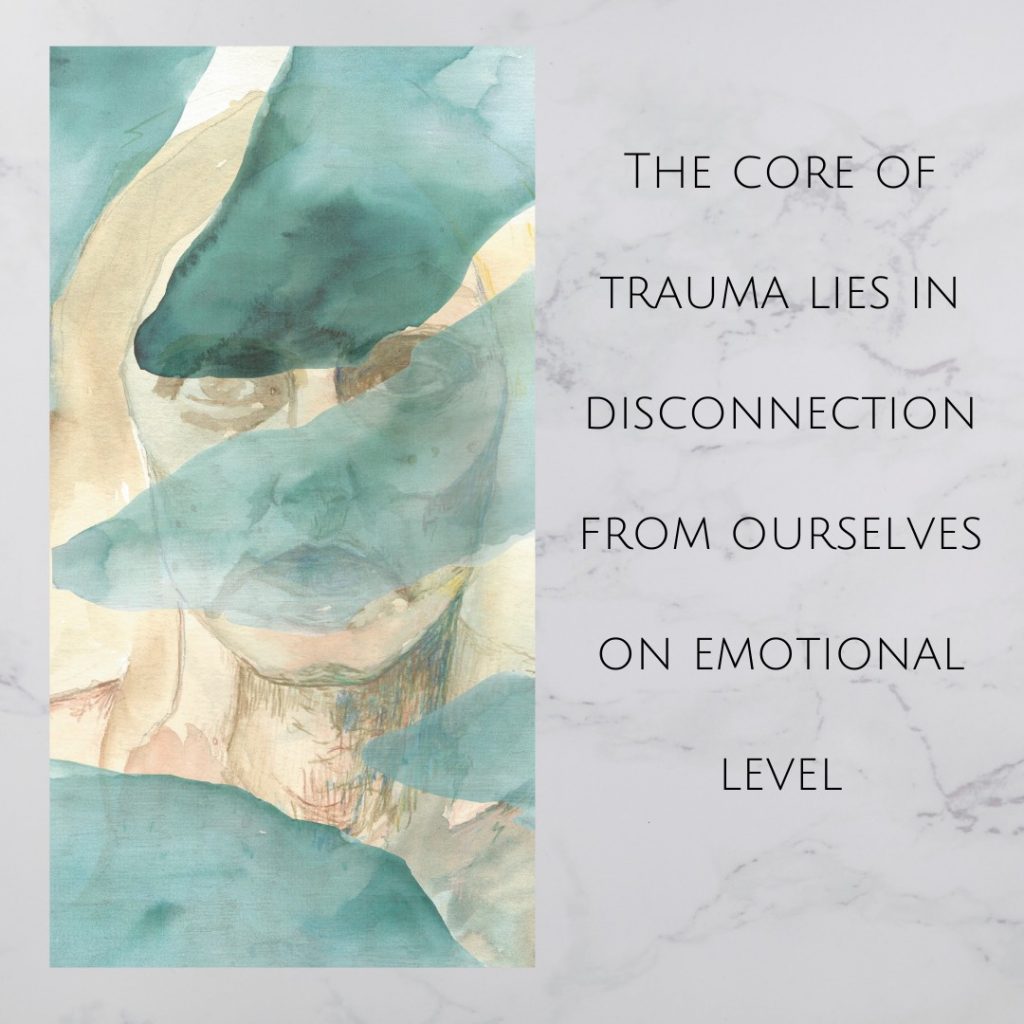
During the session with the client, we play detectives a bit. We investigate how the addiction or unwanted behavior actually helps them. What is the function of each of their parts.
Because all our parts serve us and mean well to us. And that includes the inner critic.

“The most destructive and painful parts of ourselves are the youngest. We tend to suppress them, not to feel them, we have the biggest problem with them. But it is with these parts of ourselves that we need to establish a relationship, otherwise they will grow stronger.
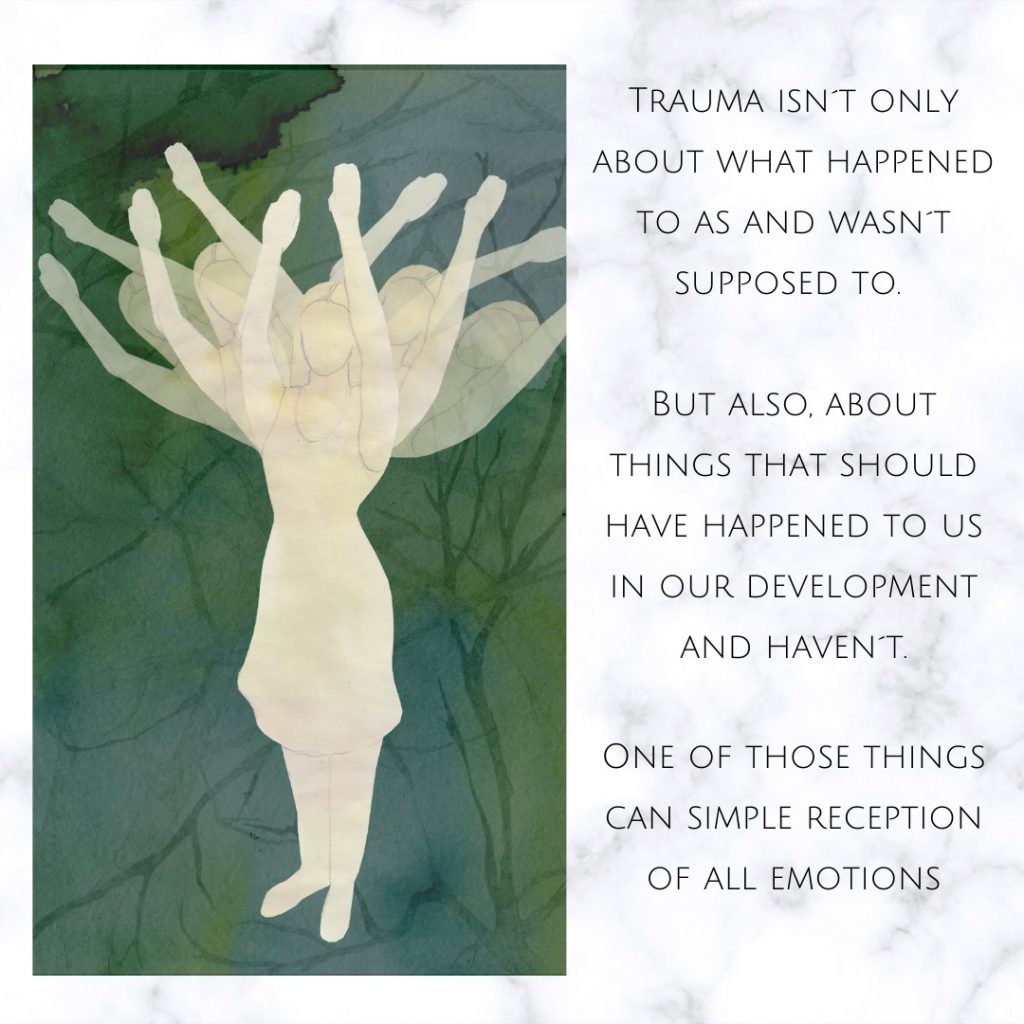
With clients, I also pay a lot of attention to their intuition, listening to the feelings and sensations they experience in the body, because this is exactly what is difficult when we act under the influence of trauma.
Mirroring in therapy
Because repressed emotions remain trapped in the body and in our personality, it is good to attend to the body and the defenses and coping strategies that we have developed and that make up our personality. Even behind the words we use, there are hidden/unconscious beliefs that we come to with the client through mirroring.
Only when we get to that repressed emotion, we can heal the pain that has been protected by some defense or coping mechanism.
This is where we get to the inner child, the part that has not been seen, understood or wasn´t allowed to feel the emotion at that moment.
And the moment you listen to this part of yourself, you become a new parent for her. Doing so, you gradually release the defenses or coping strategies that have been protecting you from feeling those emotions and pain.
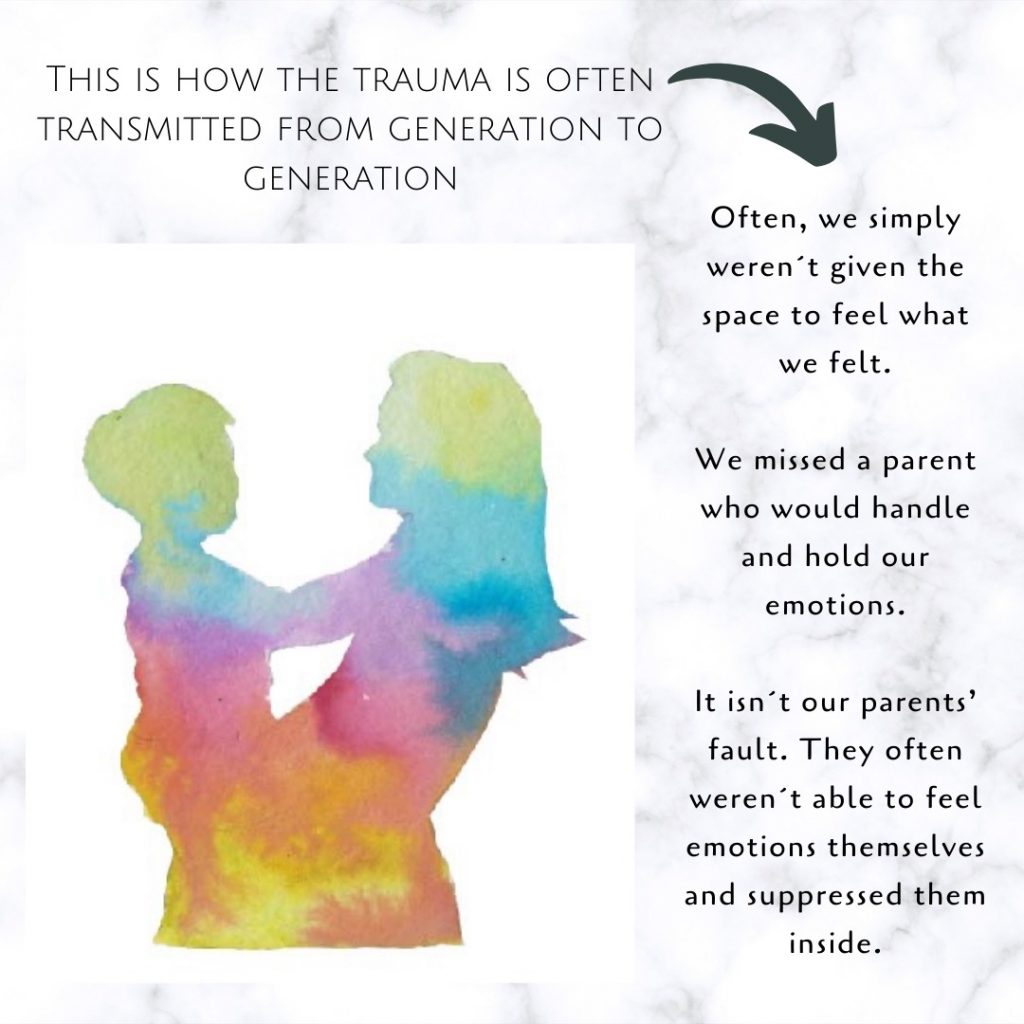
In therapy with the client, we also notice all possible defense mechanisms, such as joking, running away from bodily perception to rationality and explanation, changing topics, giggling, etc. Because everything had meaning at some point in life and we unconsciously continue to use that defense.
Why is it good to listen to the body
All truth is stored in our body, so the most important thing you can do for yourself is to listen to it.
Implicit memory already works in the prenatal period, we just don’t consciously remember those experiences. But memories are stored in the body, in emotions.

We can see in the following part of the session how the perception in the body has changed:
… “I feel that my shoulders were still pulled up. They were stiff. And now suddenly I can drop them down. And I feel better. My body relaxes, I feel relaxation in the shoulders and chest.”
We also work with clients to increase their capacity to examine different interpretations, perceive different situations, without getting carried away by the past.
Because – as we already said – it’s not about what happened, but what meaning we attributed to it and how we started to think about ourselves (but also about other people and the world in general) because of it. And those are the interpretations.

Our goal, not only in therapy, is to reconnect to the presence and to the perception of the body. In short, we aim for wholeness and the joy of experiencing it because the basis of all emotions is joy and the basis of bodily sensations is relaxation.
The possibility of change is always there for us
We don’t have to stay locked into patterns and ways of perceiving, doing, relating because we have the amazing ability to change our patterns.
The brain has an invaluable property, which is neuroplasticity.
Thanks to it, we have the possibility to rewire and create new neural connections. In this way, we also learn new things, and thus we can heal from various brain injuries and form habits that are beneficial for our life.

While we may still perceive and respond to triggers when we begin our healing journey, we are certainly more able to recognize them. And we can also calm down, influence our body and emotions.
Specific tools to trauma treatment
In trauma treatment, it is always good to work with an expert, to have your own guide. Although various practices of yoga, sports, walking, hiking, etc. can unlock our trauma and open up the possibility of its healing, it is good to have a companion.
In general, breathing exercises, various meditations, dance, imagination, massage, grounding, etc. are very useful tools for treatment.
Final sample from the session:
… “And what was the belief that the little girl accepted?”
“Something is wrong with me.”
“Do you see any connection between what that little girl believed and the situation you find yourself in now?”
“I feel that the behavior of my son’s friend and his reaction awakens fear in me and revives this belief that something is wrong with me.
That’s when my parents’ reaction made me believe that there was something wrong with me internally, and I’m afraid that this will happen to my son now.”“Alright, now what could you do for yourself in that situation when you feel that strong reaction and rising of emotions? When you feel the rage?”
“Well, I’m actually really scared at that moment. That’s my old fear. I could do for myself what I did for the little girl in the imagination.” (I did not share this part of the session, but it was about fulfilling the need of the inner girl).
“And what exactly would it look like in reality?”
“I will stop and take two minutes to feel the need of this child part of me. I see what she needs. I’ll stay with that strong emotion. I will give the little girl inside me a sense of security, I will be with her. I will breathe and hug myself, stop completely and allow myself to fully feel it for a few minutes. I will be patient and present with that feeling.”
…

Specific tools for emotional healing
The first important step that leads to balance between the emotional and rational brain is managing excessive arousal (Bessel van der Kolk, The body keeps the score).
Because 80 % of the fibers of the vagus nerve, which connects the brain to almost every organ in the body, are afferent (they lead from the body to the brain), it is possible to influence the emotional state through breathing, singing, talking and movement. This is what helps us influence this excitation system.
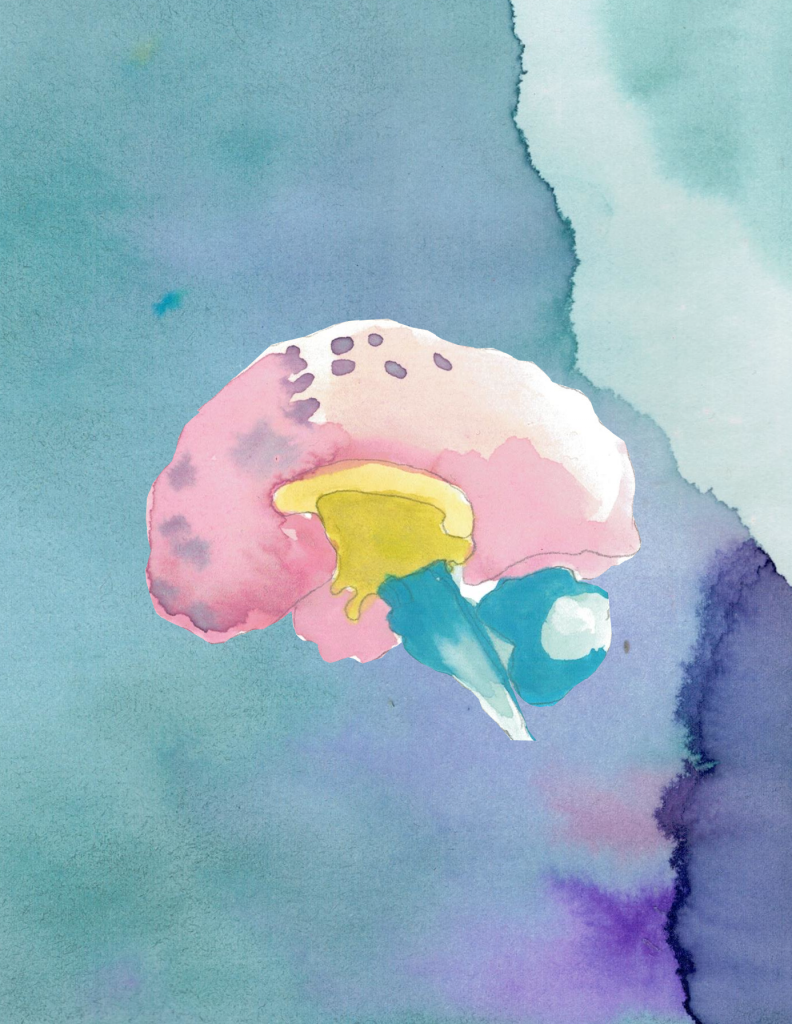
Basically, one of the most important tools is our breath. It helps us remain in relative relaxation when pain arises. And relaxation and joy are fundamental emotions and state of our being.
And that’s why I pay a lot of attention to breathing in my courses and programs, as well as when working with individual clients. In challenging emotional states for example, the simple fact that it is enough to gradually take a long deep breath into the abdomen, diaphragm and chest, followed by an even longer exhalation and then holding the breath for a while before taking another deep breath, is often priceless.
It only takes a moment to tune in to the breath. Stay with it even if the thoughts come up and come back to the awareness of the breath.
The thoughts are still with us. You don’t have to get rid of them, but notice them and return to your breath repeatedly.

As for myself, I practice kundalini yoga and like to share my experience with you. Yoga in general as well as martial arts, movement and drumming are excellent tools to strengthen the vagus nerve, which promotes emotional and trauma healing.
But all body-guided therapies should be supplemented with cognitive knowledge. In doing so, we change the narrative of our life.
In short, the key to wholeness lies in connecting with yourself, in self-awareness.
But what if we are afraid of feelings?
It is good to observe experiences and bodily sensations, to stay with them and perceive emotions as waves that change. We can remind ourselves that the more we avoid pain and difficult emotions and the more we don’t want to feel them, the more they affect us. Which is probably the hardest thing about trauma – traumatized people are often afraid of their feelings.
The most important is to stay with your perceptions, stay with your emotions, name them (ask yourself: what is happening to me right now, what am I feeling?). Emotion cards for children and adults are also used for this purpose. It is beneficial for children to describe emotions, to be aware of what is happening at a given moment.

Children learn to regulate and manage their emotions thanks to you.
In early childhood, they are still fully connected to their experiences, to their bodies, but we as a society gradually disconnect children from the perception of themselves.
Therefore, it makes sense to work on ourselves, to be aware of our emotions, injuries, to treat them, because regulated parent has the greatest influence on emotional development of a child and is the greatest gift not only to him, but also to future generations.

The result of trauma treatment and why it is worth starting emotional healing
The result of paying attention to yourself and healing your injuries is that you reconnect with yourself, your body, and the present.
It allows you to perceive body signals, to listen to emotions and to distinguish where your perception of a situation comes from without getting carried away by the past and acting automatically.
We are whole. Although the true self is still present with us, we have lost contact with it due to the trauma we and this is how we can regain it.
Our personality, our ego is important because at some point in our lives every part of us has protected us, but it is not us.
Showing gratitude to every part of yourself is a wonderful way to heal pain and access inner freedom, flexibility and relaxation.
Give yourself this gift. A gift that makes you feel the power of your soul, innocence and love. Because connecting with your core, with your heart is the beginning of global change.
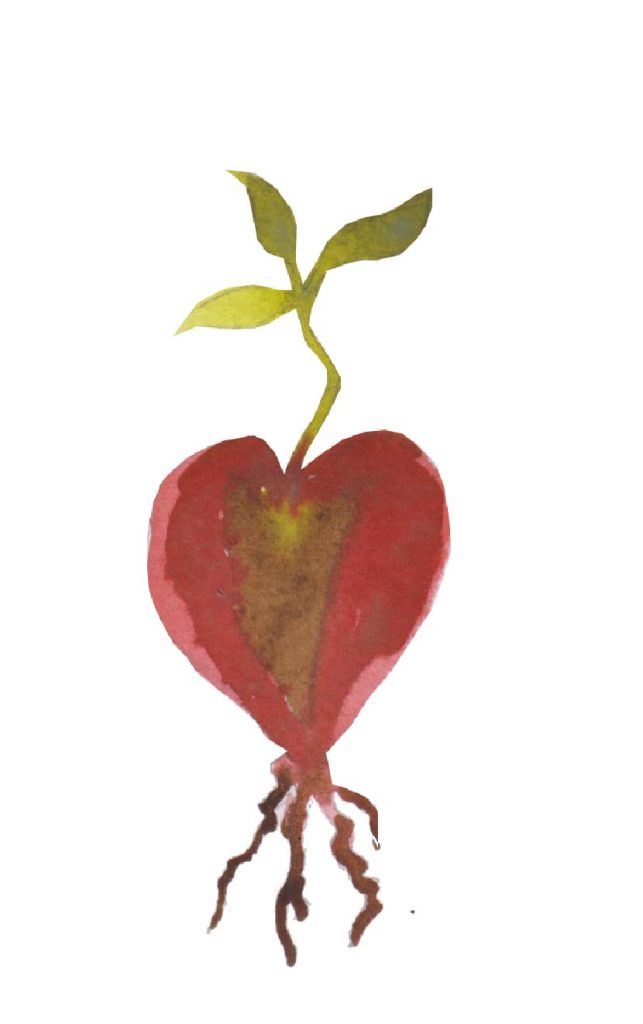
Live your dreams, your truth, even if it’s sometimes a difficult path. Everything is worth feeling, even the pain. Because only then you really experience the basic pure joy of being. And I see that as our mission.
I wish you good luck and look forward to your messages and comments.

